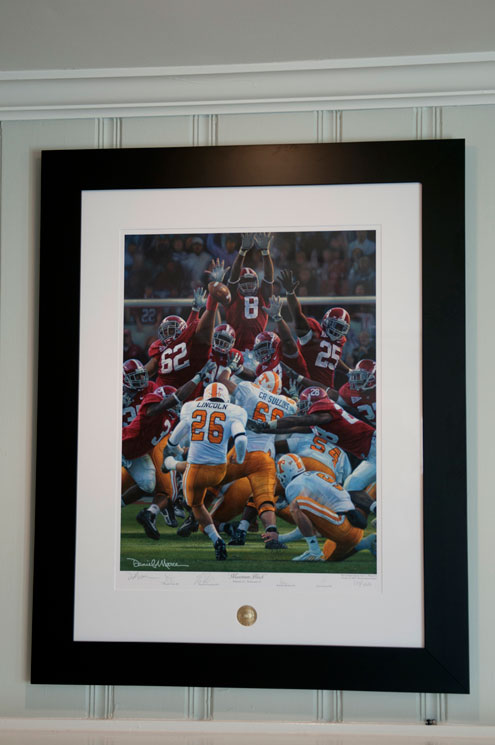 The 11th Circuit Court of Appeals in Atlanta heard the oral arguments of the University and Daniel Moore, painter of climactic moments in Alabama football history, on Feb. 2 in a case that will determine whether Moore wrongfully used symbols trademarked by the University.
The 11th Circuit Court of Appeals in Atlanta heard the oral arguments of the University and Daniel Moore, painter of climactic moments in Alabama football history, on Feb. 2 in a case that will determine whether Moore wrongfully used symbols trademarked by the University.
“With regard to trademark infringement, UA argued that the First Amendment does not give anyone the right to infringe on others’ trademarks,” Deborah Lane, assistant vice president of University Relations, said. “UA believes the justices were receptive to our responses to their questions. The parties will now await the Court’s decision.”
Moore did not comment about whether the judges were receptive to his arguments but said the court case seems to be proceeding smoothly.
“I can say that we felt like the 11th Circuit judges were well-prepared and were very familiar with the case law that is on point to the issues being appealed,” he said. “The panel of three judges asked very good questions of both sides, who each had 15 minutes allotted them for oral arguments.”
Moore said in a statement that he is not in violation of the University’s trademark interests because purchasers of his artwork know the source of the creative product.
“Within the context of the scenes in my paintings, I do not use the University’s marks and awesome-looking classic uniforms as trademarks – indicators of the source of the artwork, nor to suggest an official endorsement of those images,” he said. “I have always, in fact, used the so-called ‘recognizable signature’ of mine.”
In 2005, the University filed a lawsuit to Moore’s corporate office in Hoover, according to a statement from Moore. A U.S. District Court ruling in Birmingham in November 2009 affirmed Moore’s right to his paintings under the First Amendment, but not to his prints on mugs, calendars or other merchandise that appeared to serve more of a commercial than artistic purpose.
Both the University and Moore appealed the ruling – the University on behalf of its trademark interests and Moore on behalf of his right to circulate his artwork on commercial mediums other than solely oil paintings.
Lane said in an emailed statement that Moore has contractually agreed to refrain from using trademarked items in his artwork.
“In 12 separate contracts, Moore agreed that he would not use UA’s colors or other marks unless he first obtained a license,” she said. “Moore breached these agreements by using UA’s marks in unlicensed prints and even reissuing previously licensed images without paying any royalties.”
In a statement, Moore defended his paintings as a form of artistic expression that is protected by the First Amendment.
“True art speaks a universal language that transcends cultural bounds,” he said. “It documents history; it predicts the future. It soothes; it irritates. It celebrates; it mourns. It is real; it is abstract. It is loud; it is quiet. It provokes questions; it shouts answers. And on and on it goes. But above all, art communicates. Such is art.”









